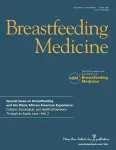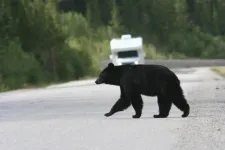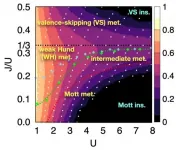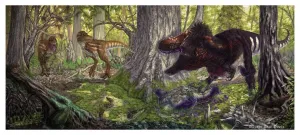RUDN mathematician builds a COVID-19 spread model -- it shows how vaccination affects pandemic
2021-06-17
(Press-News.org) RUDN University mathematicians built a model of COVID-19 spreading based on two regression models. The mathematicians divided the countries into three groups, depending on the spreading rate and on the climatic conditions, and found a suitable mathematical approximation for each of them. Based on the model, the mathematicians predicted the subsequent waves. The forecast was accurate in countries where mass vaccination was not introduced. The results are published in Mathematics.
The epidemy spreading rate within the country depends, among other things, on the climatic conditions: temperature, humidity, winds. For example, in the cold season, dry air dries the nasal mucus out which acts as a first line of defence to the virus. Therefore, a person becomes infected faster. High temperature, on the contrary, prevents the virus from surviving. Based on these considerations, professor Maria Alessandra Ragusa of RUDN University together with her colleagues from Egypt and Italy built models of the COVID-19 spread separately for three groups of countries with different climatic conditions. It turned out that the model accurately predicts the further course of the epidemic, but only until the effect of vaccination begins to affect.
"The main challenge during studying epidemics is how to predict the disease behaviour, how many people will be infected in the future, determining the pandemic peak, second wave of the disease time of action, and the total deaths after the pandemic ends. We used a new state-of-art of regression models to model daily confirmed cases and to predict the upcoming coronavirus waves in different countries.", Maria Alessandra Ragusa, professor of RUDN University.
Mathematicians have identified three groups of countries. The first category includes countries where the first wave of the pandemic lasted about 180 days. These are the countries with the lowest spreading rate, with an average annual temperature of 15-38 ? (for example, Saudi Arabia, Egypt). In the second group of countries (for example, the United Kingdom, Germany, Italy) with an average annual temperature of 2-31 ° C, the first wave lasted 90 days. Countries in this group are characterized by an average infection rate and stopping periods with low virus spreading rate. The third group includes countries with the highest spreading rate and no stopping periods, with an average annual temperature of 2-18 degrees Celsius -- for example, the United States and Russia.
For modelling, scientists used WHO data on the number of cases from March 1 to November 15, 2020. RUDN mathematicians chose the most suitable regression models -- methods for statistical research of the influence of several variables on one value. The Fourier series and the sum of the sine-waves were the most accurate for the modelling COVID-19 cases. This means that the curve of new cases of the disease is represented either as a sum of Fourier functions (they can be represented as waves of a certain frequency and amplitude), or as a sum of ordinary sine-waves.
As a result, professor Ragusa obtained the calculated values of the peak of the second or third wave in the studied countries. Different models gave close forecasts with a difference of several days. The obtained predictions were compared with the data available at that time. It turned out that the model provides fairly accurate predictions if the country does not introduce wide vaccination. For example, the calculated value of the peak of new cases in Egypt is 1481 people on January 11, 2021; the real peak occurred on December 31 with 1418 cases. In other countries, the model provides an accurate prediction until the beginning of 2021. After that, the vaccination effect takes place and the calculated values differ from the reality. For example, for Germany, the predicted and real values are close until about January 15, 2021, and on February 15 they differ by about 2.5 times.
"In our future work, we will make developments on the current predictive models considering how vaccination affects the virus spread rate", Maria Alessandra Ragusa, professor of RUDN University.
INFORMATION:
[Attachments] See images for this press release:
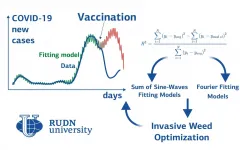
ELSE PRESS RELEASES FROM THIS DATE:
2021-06-17
In recent years, significant progress has been made towards the use of high-resolution peripheral computed tomography (HR-pQCT) imaging in research, and new potential for applications in the clinic have emerged, particularly with the advent of second generation devices.
A newly published state-of-the-art publication on the use and future directions of HR-PQCT provides a concise overview of current clinical applications as well as valuable guidance on the interpretation of results.
Specifically, it gives an overview of:
differences and reference data for HR-pQCT variables by age, sex, body composition and race/ethnicity;
fracture risk prediction using HR-pQCT, specifically in regard to bone microarchitecture in individuals ...
2021-06-17
AURORA, COLORADO, June 16, 2021 -- Foresight Diagnostics, the emerging leader in blood-based lymphoma disease monitoring, announced today that clinical performance of its minimal residual disease (MRD) detection platform in diffuse large B-cell lymphoma (DLBCL) will be presented at the 16th International Conference on Malignant Lymphoma (ICML) on June 18-22, 2021. The oral presentation demonstrates the utility of Foresight Diagnostics' proprietary PhasED-Seq technology to improve MRD detection rates in DLBCL patients in low-disease burden settings.
"Foresight's MRD testing platform can detect relapsing disease 200 ...
2021-06-17
Cancer cells can develop resistance to therapy through both genetic and non-genetic mechanisms. But it is unclear how and why one of these routes to resistance prevails. Understanding this 'choice' by the cancer cells may help us devise better therapeutic strategies. Now, the team of Prof. Jean-Christophe Marine (VIB-KU Leuven Center for Cancer Biology) shows that the presence of certain stem cells correlates with the development of nongenetic resistance mechanisms. Their study is published in the prestigious journal Cancer Cell.
Two routes to resistance
Even though cancer therapy has made great strides in the ...
2021-06-17
African American mothers continue to have the lowest breastfeeding rates, even as the breastfeeding rates have risen in the U.S. over the past 25 years. Racism is an important barrier to breastfeeding, as examined in Part 2 of a special issue on "Breastfeeding and the Black/African American Experience: Cultural, Sociological, and Health Dimensions Through an Equity Lens," published in the peer-reviewed journal Breastfeeding Medicine. Click here to read the issue now.
The special issue is led by Guest Editor Sahira Long, MD, a pediatrician and lactation consultant.
Exploring how racism creates barriers to breastfeeding for Black mothers and how Black women resist racism during their quest to breastfeed are Catasha Davis, PhD and Aubrey Van Kirk Villalobos, DrPH, Milken Institute School ...
2021-06-17
Since 2005, the guidelines for the care of unconscious cardiac arrest patients have been to cool the body temperature down to 33 degrees Celsius. A large, randomised clinical trial led by Lund University and Region Skåne in Sweden has shown that this treatment does not improve survival. The study is published in the New England Journal of Medicine.
"These results will affect the current guidelines", says Niklas Nielsen, researcher at Lund University and consultant in anaesthesiology and intensive care at Helsingborg Hospital, who led the study.
In the early 2000s, two studies in the New England Journal of Medicine showed that induced hypothermia in unconscious cardiac arrest patients ...
2021-06-17
Conservationists have long warned of the dangers associated with bears becoming habituated to life in urban areas. Yet, it appears the message hasn't gotten through to everyone.
News reports continue to cover seemingly similar situations -- a foraging bear enters a neighbourhood, easily finds high-value food and refuses to leave. The story often ends with conservation officers being forced to euthanize the animal for public safety purposes.
Now, a new study by sustainability researchers in the Irving K. Barber Faculty of Science uses computer modelling to look at the best strategies to reduce human-bear conflict.
"It happens all the time, and unfortunately, humans are almost ...
2021-06-17
Research shows that inhibiting necroptosis, a form of cell death, could be a novel therapeutic approach for treating chronic obstructive pulmonary disease (COPD), an inflammatory lung condition, also known as emphysema, that makes it difficult to breathe.
Published in the prestigious American Journal of Respiratory and Critical Care Medicine, the study by a team of Australian and Belgian researchers, revealed elevated levels of necroptosis in patients with COPD.
By inhibiting necroptosis activity, both in the lung tissue of COPD patients as well as ...
2021-06-17
Electrons are ubiquitous among atoms, subatomic tokens of energy that can independently change how a system behaves--but they also can change each other. An international research collaboration found that collectively measuring electrons revealed unique and unanticipated findings. The researchers published their results on May 17 in Physical Review Letters.
"It is not feasible to obtain the solution just by tracing the behavior of each individual electron," said paper author Myung Joon Han, professor of physics at KAIST. "Instead, one should describe or track all the entangled electrons at once. This requires a clever way of treating this entanglement."
Professor Han and the researchers used a recently developed "many-particle" theory to account for the ...
2021-06-17
New UMD study suggests that everywhere tyrannosaurs rose to dominance, their juveniles took over the ecological role of medium-sized carnivores
A new study shows that medium-sized predators all but disappeared late in dinosaur history wherever Tyrannosaurus rex and its close relatives rose to dominance. In those areas--lands that eventually became central Asia and Western North America--juvenile tyrannosaurs stepped in to fill the missing ecological niche previously held by other carnivores.
The research conducted by Thomas Holtz, a principal lecturer in ...
2021-06-17
Like the movie version of Spider-Man who shoots spider webs from holes in his wrists, a little alpine plant has been found to eject cobweb-like threads from tiny holes in specialised cells on its leaves. It's these tiny holes that have taken plant scientists by surprise because puncturing the surface of a plant cell would normally cause it to explode like a water balloon.
The small perennial cushion-shaped plant with bright yellow flowers, Dionysia tapetodes, is in the primula family and naturally occurs in Turkmenistan and north-eastern Iran, and through the mountains of Afghanistan to the border of Pakistan. What makes it unusual is its leaves, which are covered in long silky fibres that ...
LAST 30 PRESS RELEASES:
[Press-News.org] RUDN mathematician builds a COVID-19 spread model -- it shows how vaccination affects pandemic

